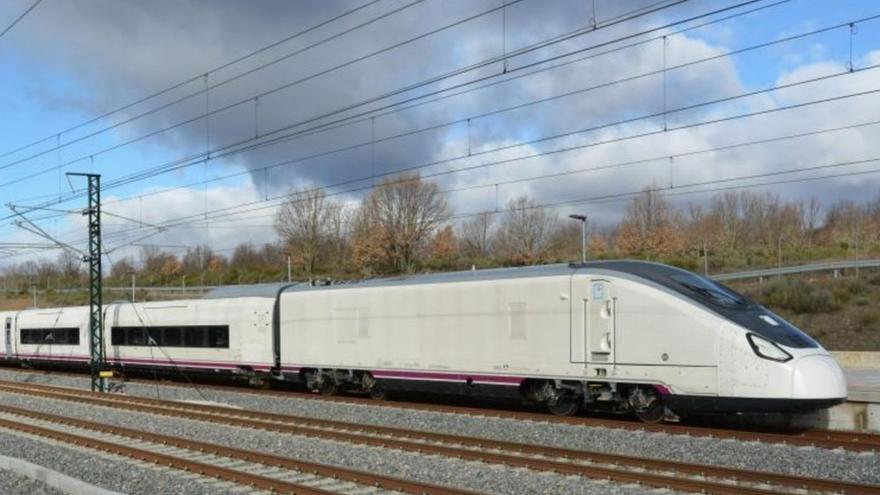Rarely has a model train received so much attention before it was put into operation. The Avril –acronym for High Speed Light Independent Wheel– are the white blackbird of the railway in Spain, especially for Renfe. The public company has been waiting for them for two years to improve its services on the Madrid-Galicia line and be able to allocate the trains of the 130 and 730 series to others such as Euskadi, Cádiz, Teruel, Extremadura or the Mediterranean Corridorwhere supply is also scarce compared to demand.
And only in the case of Vigo It is expected that its implementation will allow double the availability of current direct places and reduce travel time 30 minutes.
That is why the delays in its premiere will be the main topic at the meeting that will be held this Wednesday in Madrid by the counselor of Infrastructure and Mobility and the Secretary of state of Transport, Mobility and Urban Agenda. Ethel Vazquez will move to David Lucas the need to have “a certain and concrete calendar” about these convoys whose first date of circulation for Galicia was last summer. Since then, the Xunta has harshly charged against the Ministry ofe Transportation before each postponement due to the effects they have.
These “all terrain“can circulate at 300 kilometers per hour on Iberian wide roads (1668 mm) or standard (1435 mm) compared to the current 250 km/h. Furthermore, its greater capacity with 521 plazas by train would significantly increase supply and lower prices in a connection in which the plane continues to win thanks to the competition between Air Europa and Iberia.
Currently, the four direct trains in each direction of the Alvia service that link the station Vigo-Urzáiz and Madrid-Chamartín have about 1,100 places in each relationship, depending on whether the S-130 trains (299 seats) or the S-730 hybrids (263 seats when fitted with diesel engines) are used.
Waiting for Renfe to reveal the final distribution of the fifteen variable width units – of which Galicia claims seven – everything indicates that they could be established three daily services in each direction to Vigo when the trains are at full capacity. Furthermore, its higher top speed would allow it to reduce just over 3 and a half hours the best travel times, which are placed at 4 hours and 12 minutes with three stops.
Blame Talgo and secrecy
The construction contract was signed in November 2016 for 787 million euros and the first units should have been delivered at the beginning of 2021. This is why in June 2022 Renfe announced that it would claim compensation of 116 million.
Since Talgo began homologation with test trips in February of last year, hardly any progress has been reported. In fact, despite managing to break the Iberian gauge speed record worldwide with 363 km/h between Ourense and Santiago, no image of this feat emerged. This secrecy from all the parties involved (Talgo, Renfe and the Ministry) has raised doubts about a model that has not yet received the final approval from the European Railway Agency (ERA), since all the units have been manufactured but not It is known if they have deficiencies in any of their parts.
2023-10-04 05:50:13
#Avril #trains #double #highspeed #seats #line #Madrid


